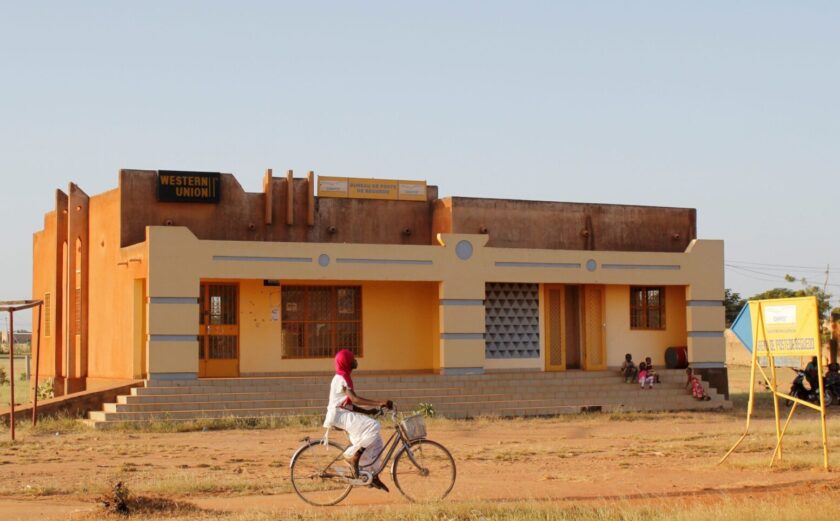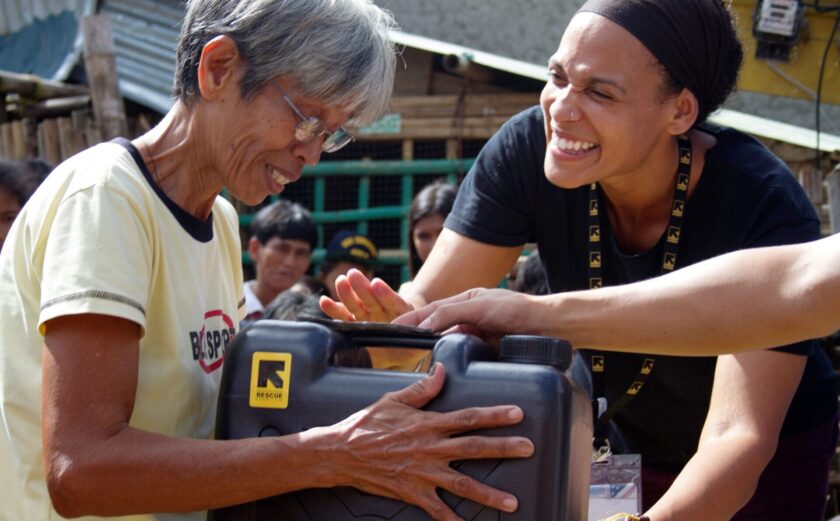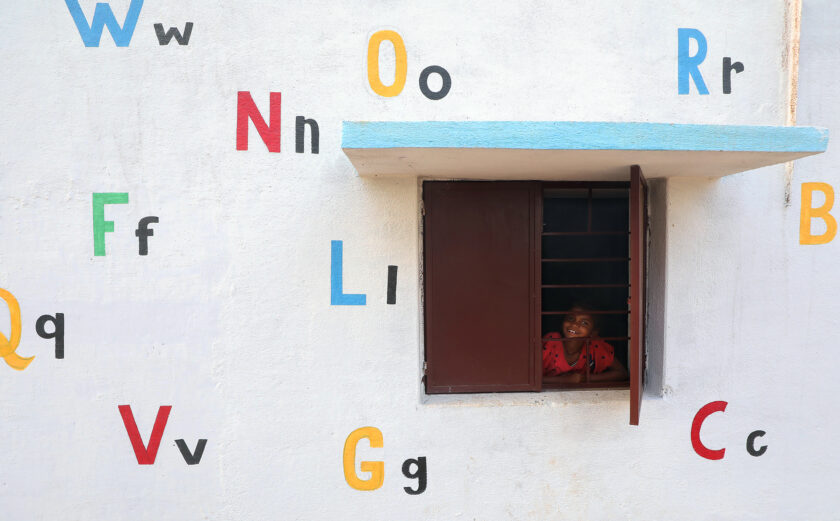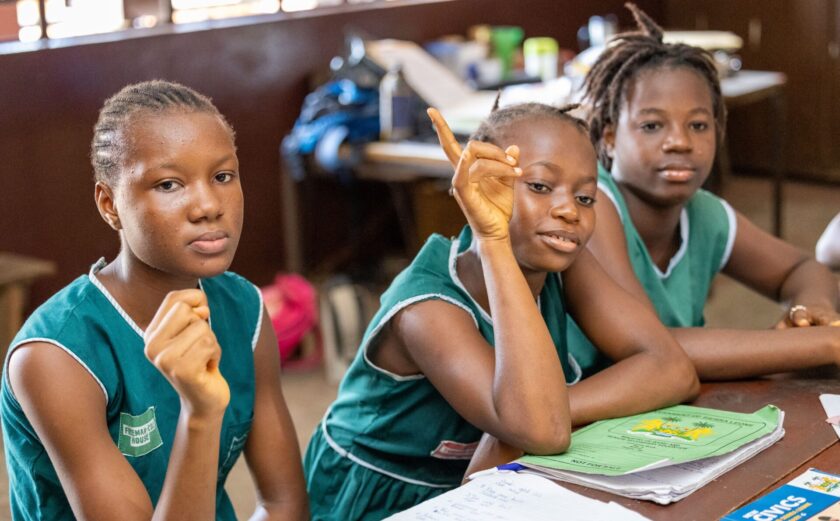
Introducing the New NGO Aid Map
In late 2019, InterAction began transforming the NGO Aid Map to better serve the needs and interests of the NGO community today, with support from the International Fund for Agricultural Development (IFAD).
After a two-year redesign process that involved extensive engagement with a broad network of relevant stakeholders and an iterative approach to design based on direct engagement with those stakeholders, InterAction is pleased to announce the launch of the new NGO Aid Map.
Like its predecessor, the redesigned NGO Aid Map continues to showcase the work of InterAction Member organizations around the globe. However, InterAction made critical updates to the types of content featured on the Map and how it is presented—and added some brand-new features along the way. This reorientation will allow the Map to more effectively amplify the life-saving work of InterAction Members.
So, what does the redesigned NGO Aid Map do and how does it work? Who is it for? Why did we redesign the Map in the first place? And, importantly, what comes next?
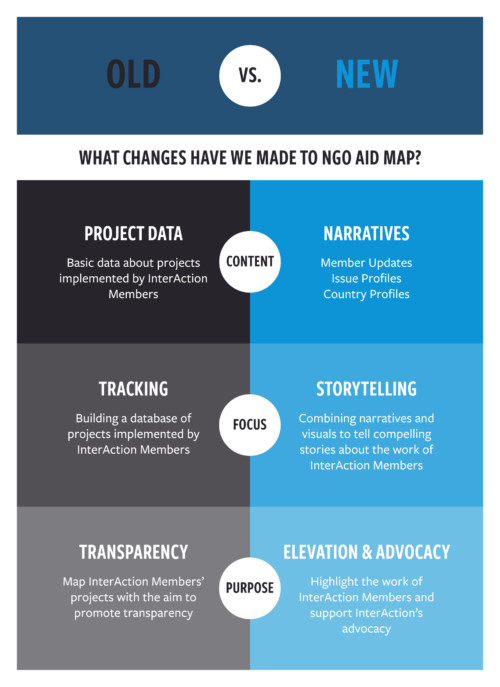
Why redesign NGO Aid Map?
When NGO Aid Map first launched in 2009, it was designed as an open data platform that aggregated data on InterAction Members’ projects. Its goal was to increase the amount of publicly available data on international development and humanitarian response by mapping our Members’ active projects. Over time, the platform featured more than 19,000 projects across many sectors and continents, by organizations large and small.
While the previous version of the platform had been effective in communicating the breadth and depth of InterAction Members’ global impact, its relevance faded over time as the challenges of the NGO sector evolved. Member engagement tapered as organizations no longer prioritized uploading data of active projects as they once did.
In response, InterAction began exploring how to pivot the site to a different use case, one more relevant to today while also leveraging InterAction’s unique strengths as an alliance of INGOs.
We consulted with a broad network of relevant stakeholders to learn how the Map could be reoriented to provide the most value. We aimed to be as inclusive as possible in order to garner feedback from key profiles including communications, monitoring and evaluation, policy advocacy, and data.
These consultations enabled us to form a clearer vision of a redesigned NGO Aid Map—what it should do, who it is for, and how it will provide value to users.
What does it do?
The feedback we received from our consultations led us to redesign the Map around two core functions:
- To map the impact of our Members through their work in international development and humanitarian response.
- To support and enhance InterAction’s advocacy by bringing data and mapping capabilities to our advocacy initiatives and products.
Mapping
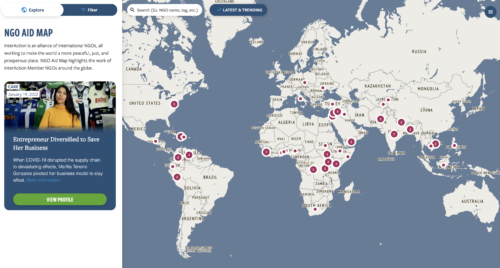
The first function—mapping—carried over to the new version of the Map, though with a few key differences. Whereas the previous version used a rigid data model to capture specific data about Members’ active projects, the redesigned Map model emphasizes storytelling and narratives. Previously, Members would submit data about their projects (e.g., project name, description, location, start/end dates). Now, they can submit narratives that focus on the human element—incorporating stories from the people they work with and how they have been impacted by their work. In other words, insofar as the Map visualizes our Members’ impact, it is no longer done so through the aggregation of project data but through stories submitted by Members. We call these “Member Updates” (or “Updates”).
Updates are the core content of NGO Aid Map and populate the Map itself. They showcase the work of InterAction Member organizations in countries around the globe. Updates highlight active projects, activities, or accomplishments in the field, and could include a success story, an impact evaluation, research related to a particular geography, a photo story or video, or more. Updates are mapped and filterable by country, Member, sector, topic, and date, and further filterable by whether that work is funded by the U.S. government. In short, Updates are snapshots of our Members’ work that they want to highlight on the Map.
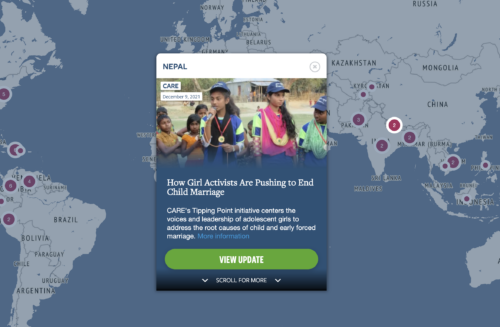
Full, active InterAction Member organizations can submit Updates on a rolling basis using a simple Google Form, and InterAction reviews and uploads new Updates monthly. We made the submission process as quick and easy as possible for Members.
The mapping function, and particularly the emphasis on impact stories, is valuable from communications and mission expansion perspectives as it allows our Members to showcase their work with a broader audience. In a sense, the NGO Aid Map raises the visibility of our Members and their work.
Advocacy
The second function—advocacy—is an entirely new aspect of the Map. We built a flexible platform that InterAction staff can use to design visual and data-driven narratives about key issues in the sector. We call these “Issue Profiles.”
Issue profiles provide a more in-depth look into key issues concerning our sector and were designed specifically with InterAction’s advocacy in mind. Issue Profiles combine text, data, media, mapping, and other visualization capabilities into a single narrative format that is customizable and easy to create, meaning InterAction staff and working groups can produce fully customizable, dynamic visual and data-driven narratives in support of their advocacy work. For example, check out Issue Profiles written on the hidden crisis of humanitarian aid, the future of food, and why localization matters.
Issue Profiles represent a new key tool in InterAction’s advocacy toolbox, one which we are eagerly introducing to our regional and technical working groups.
Who is NGO Aid Map for?
| Audience | User Type | Use Case |
| Primary | InterAction Members | Highlight impact stories about the critical work that InterAction Members are doing around the globe |
| InterAction policy staff | Add advanced data, visualization, and mapping capability—beyond what the current InterAction website is capable of—to strengthen our advocacy efforts | |
| Secondary | Congress and staffers Executive departments/agencies |
Better understand the context, challenges, and needs of the sector as they relate to foreign aid and InterAction’s policy advocacy |
| Tertiary | Journalists, academics, and the general public with an interest in international development and humanitarian response | Learn more about the work of InterAction and our Members |
What happens next?
In the coming months, our primary goal is to spread the word about the redesigned NGO Aid Map to our membership. Following the platform’s recent launch, we are eager to populate the Map with Updates from our Members. Building it out requires that our Members know about—and ultimately value—what the Map has to offer in furtherance of their missions supporting marginalized people around the globe.
Want to get your organization’s work on the map?
Ultimately, only input and engagement from InterAction Members will help to grow this platform and better showcase the critical work InterAction Members do around the globe.
If you are from an InterAction Member organization, we encourage you to sign up to receive platform updates and monthly Member Update reminders, via InterAction’s NGO Aid Map email list HERE.
If you’d like to get your organization’s work on the Map, reach out to InterAction at mappinginfo@interaction.org to confirm whether we already have a point of contact within your organization. If so, we’ll connect you to that point of contact. If not, we’ll provide you with the direct link to submit Updates.
